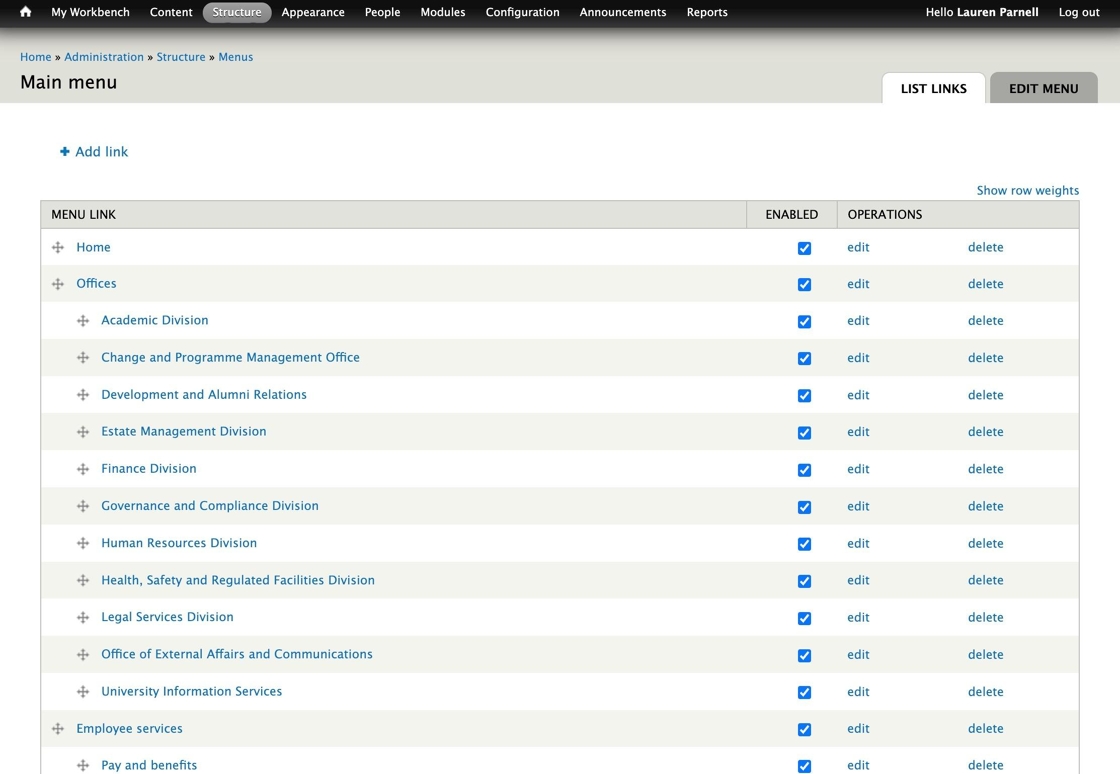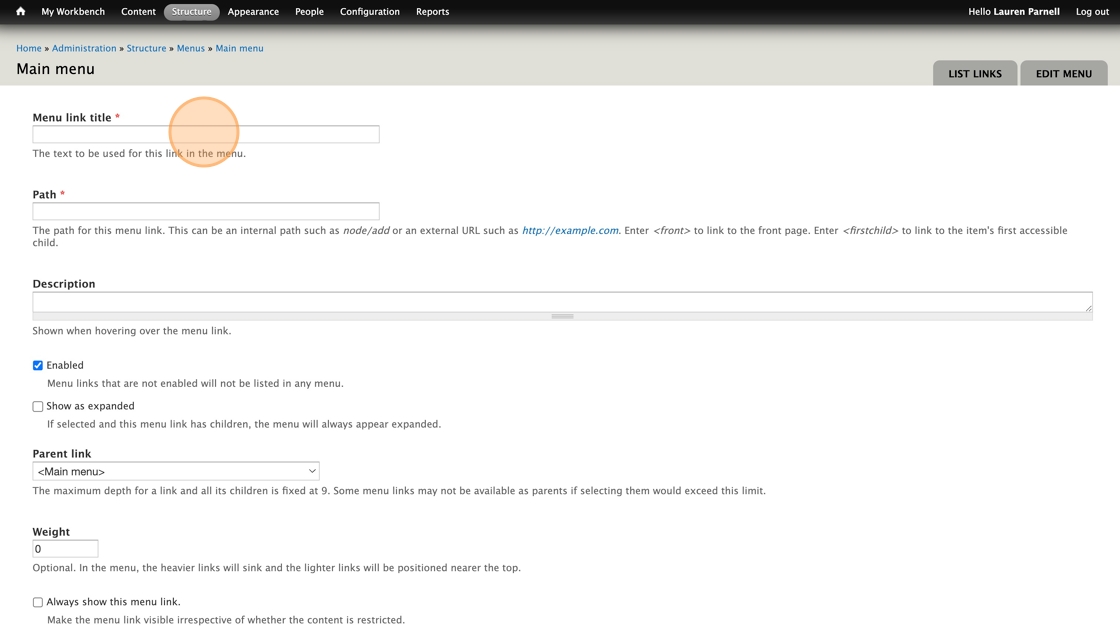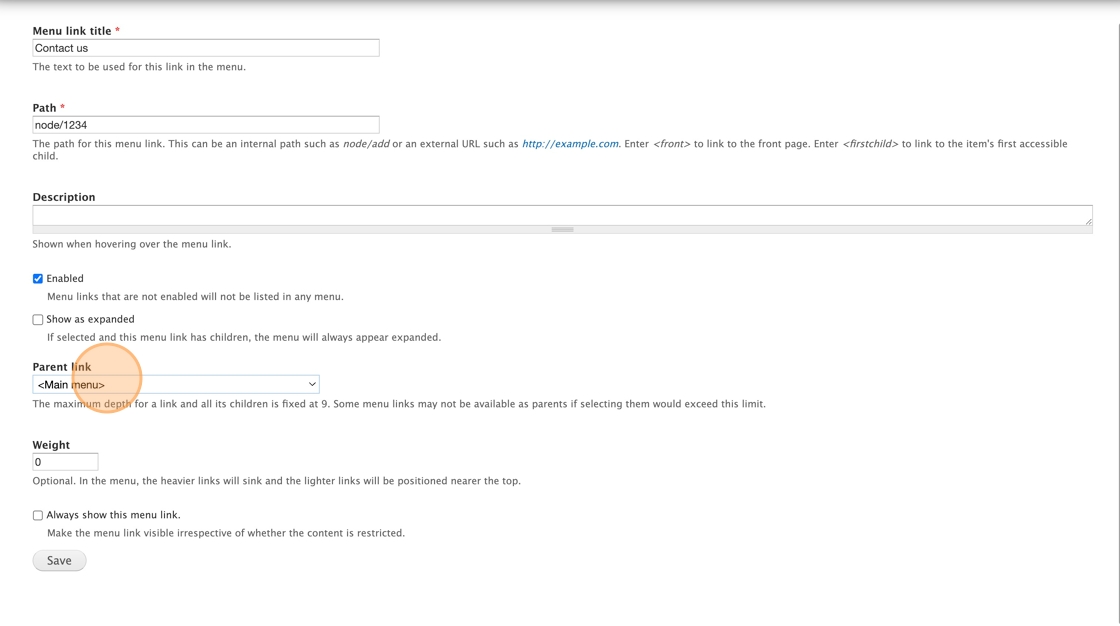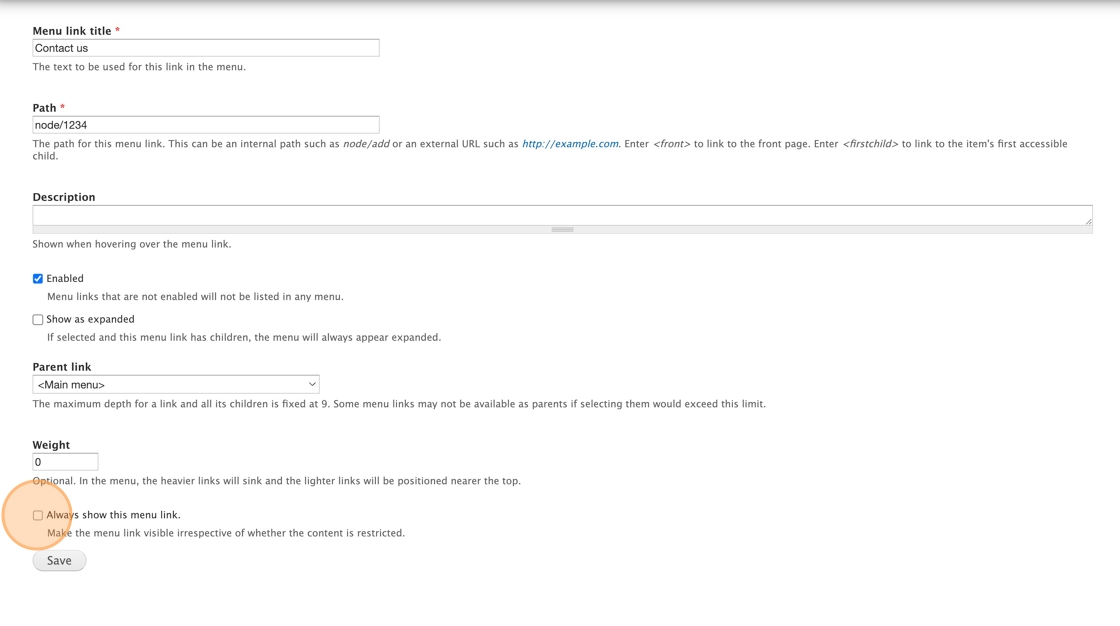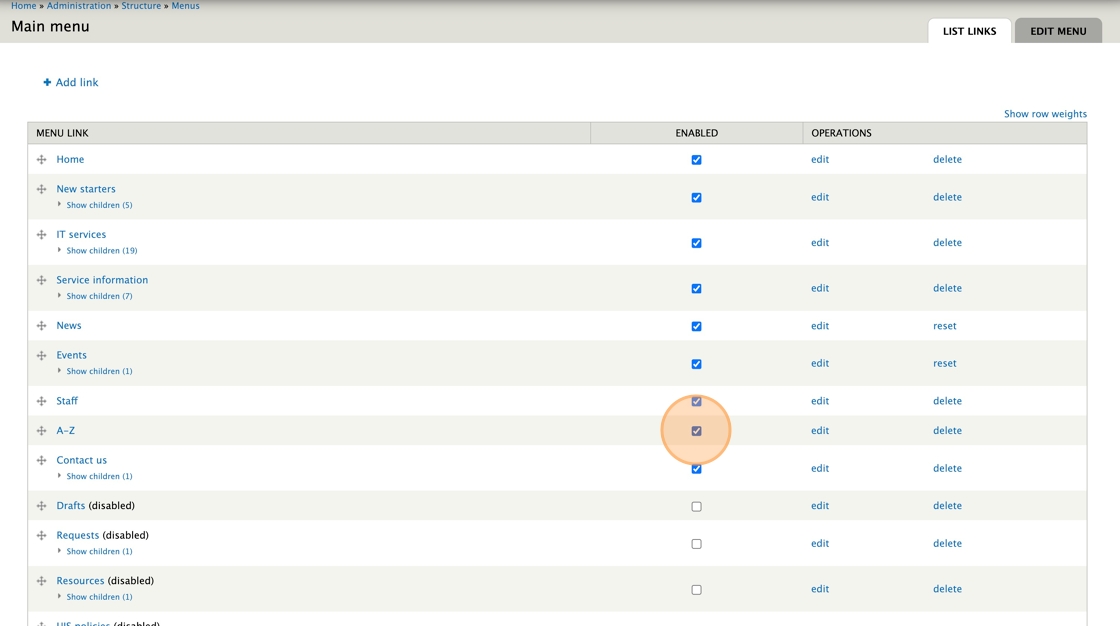This page covers
- who can change the menu settings
- when to change the menu settings
- content standards for menus
- recording your menu
- creating a menu item
- disabling menu items
Who can change the menu settings
Changing your site's menu configuration requires site admin permissions. Only experienced content editors should use this function. Contact the Drupal team via webmaster@admin.cam.ac.uk if you would like site admin permissions.
When to change the menu settings
You can add and remove items from your site menu using the “Menu settings” tab on any draft web page.
Avoid changing the menu settings unless you need to:
- temporarily hide a page in the navigation
- add a page to the navigation manually
- change the order of child pages underneath a parent page (you can also do by changing the “weight” of a page in the “menu settings” tab)
Content standards for menus
- Use clear and specific menu labels. Avoid jargon or acronyms
- Front-load key words
- Keep menu labels short. Aim for less than 50 characters. Menu labels should not span more than 2 lines
- Use card sorting to help you organise and categorise your content
How to configure your site menu
Reordering your menu
1. Navigate to “/admin/structure/menu/manage/main-menu”. Or select "Structure" then "Menu" and then "Main menu" in the admin menu.
2. You'll see your site's main menu appears as a list.
3. To reorder the menu, hover your cursor over the cross arrow icon. Click and drag that menu item to reorder it in the navigation.
4. Select "Save configuration" at the bottom of the page.
Creating a Menu item
1. Create the web page you wish to link to before adding a new menu item.
2. Navigate to “/admin/structure/menu/manage/main-menu/add”. Or select "Structure" then "Menu" and then "Main menu" in the admin menu.
3. In the "Path" field enter the node id of the page you want to link to. You can find this in the URL when your web page is in edit mode. For example, "node/1234". Using the node id means that even if the URL of the page changes, your menu link will still work.
Avoid adding external URLs. Getting taken to a different site without warning could confuse users.
5. Select the parent menu item in the "Parent link" dropdown. Your new menu item will sit below this in the navigation.
6. Some Drupal 7 sites have an additional field "Always show this menu link." Check this box if you have a restricted, cam-only page that you want to appear in the menu for users who aren't logged in. They will see a message asking them to log in to view the content.
7. Select “Save”.
Disabling menu items
Use with caution
We do not recommend excluding pages from the navigation unless you briefly want to create a test web page. Or you temporarily need to hide a page.
Be aware that search engines will still index the page if it is excluded from the navigation. You should not exclude content for an internal audience from the navigation. Ideally, this should be added to a SharePoint site. Or you can add it to Drupal as a restricted cam-only web page.
Excluding pages from the website navigation also makes them harder to manage. They can get forgotten about and easily become out of date.
1. Navigate to “/admin/structure/menu/manage/main-menu”. Or select "Structure" then "Menu" and then "Main menu" in the admin menu.
2. Click on the relevant tick box in the enabled column to de-select the menu item.
3. Select "Save configuration" at the bottom of the screen.
4. The web page you've removed from the navigation is still live. Some users might be able to find the page using Google search or if they know the exact URL. Find out how to unpublish web pages.
Get help
If you need help with your Drupal website, contact the Drupal team via webmaster@admin.cam.ac.uk.
Content editors around the University can get guidance and advice from the Content Community.

